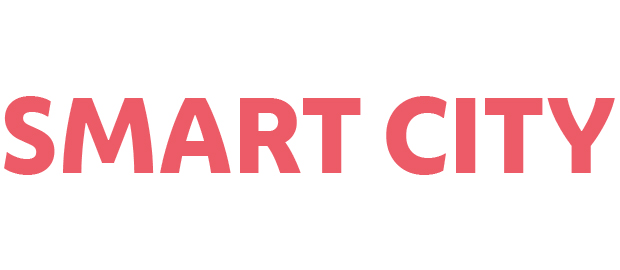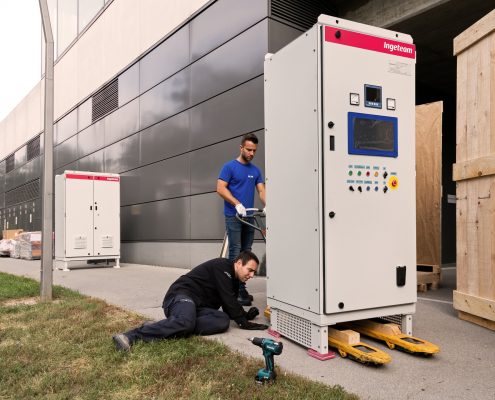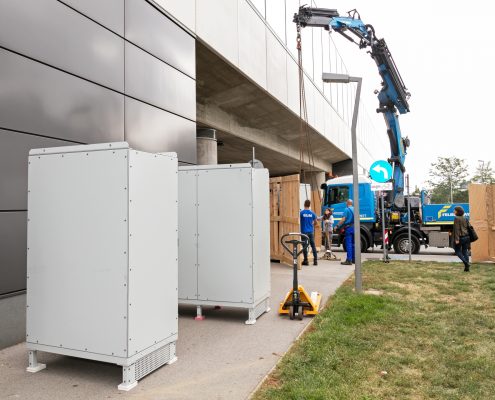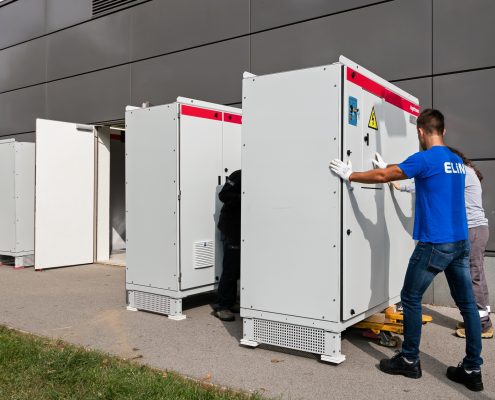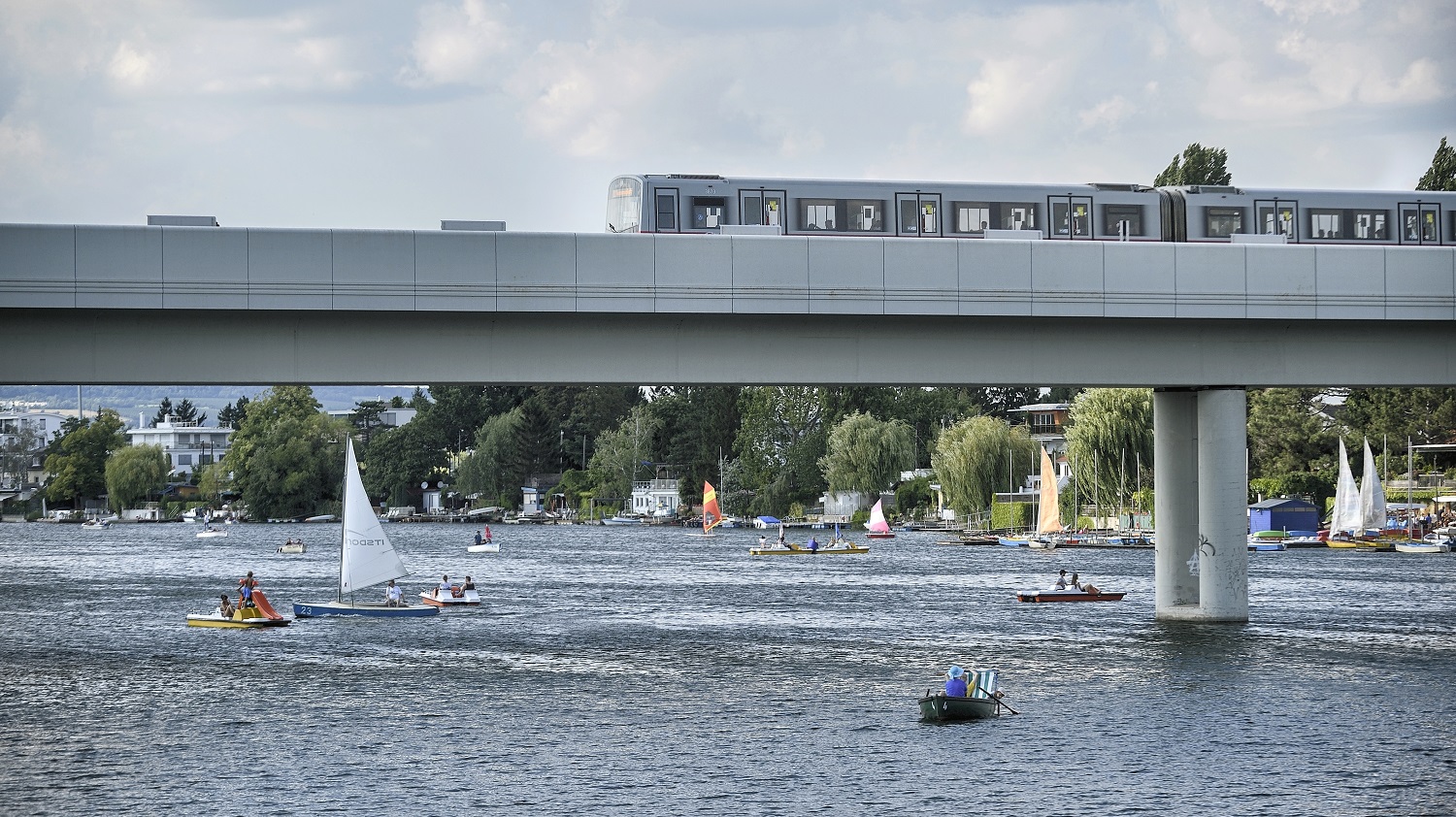
Vienna’s underground trains and trams all generate energy when they brake. Most of the Wiener Linien fleet has long had the technical capacity to recover between a quarter and a third of the kinetic energy of braking by feeding it back into the direct current power system. Wiener Linien has installed a pilot plant close to Hardegggasse U2 station with a view to using this brake energy even more efficiently. Elsewhere on the underground rail network, trains in the immediate vicinity of a braking train can use the direct current recovered from it for acceleration. If there is no other vehicle in the same sector, the train’s brake resistors convert the kinetic energy of braking into heat, which is used to heat the passenger carriages in winter or is otherwise lost. However, the pilot plant allows the energy from braking trains to be used to power escalators, lifts and lighting in underground stations.
Flexible inverter technology
During braking the train’s traction motors function as generators, transforming the kinetic energy into electrical energy. In the pilot plant, an inverter converts the direct current voltage produced by the train into alternating current, which can then be used directly to power the overhead lines of the tram network, the rails of the underground rail network, or fed back into the public power grid. The one-year test phase alone (up to 2018) generated some 1.6 gigawatt-hours of alternating current electricity, which is equivalent to the annual consumption of 360 households or energy costs of just over 100,000 euro. This improved recycling of energy not only makes the entire underground rail network more energy efficient in its operation and reduces carbon emissions; it is also of economic benefit to the City of Vienna because it reduces the operating costs of the public transport network.
Further plants in the pipeline
Wiener Linien is therefore planning five further plants throughout the entire underground rail network. The pilot project was jointly funded by Wiener Stadtwerke and Wiener Lokalbahnen with money from the FTI Innovation Fund. The electricity consumption of the underground rail network currently accounts for some 40% of the total electricity consumption of Wiener Linien. This is about 170 GWh per year, which corresponds to the annual consumption of about 50,000 Viennese households. Smart ideas are therefore required to further optimise the energy efficiency of the operation.
Transport and energy are key pillars of the Smart City Wien Framework Strategy aimed at reducing Vienna’s carbon footprint and local consumption of resources. Because growing cities need to provide for rising volumes of passengers, the subject of energy recovery and recuperation is also very much on the international radar. Smart City Wien has the potential to serve as a model for others in this sector.
Contact
Johanna Griesmayr, BA
Press and Communication
Wiener Linien GmbH und Co KG
E-Mail: johanna.griesmayr@wienerlinien.at
Website: Wiener Linien (in German)
This post is also available in: German

